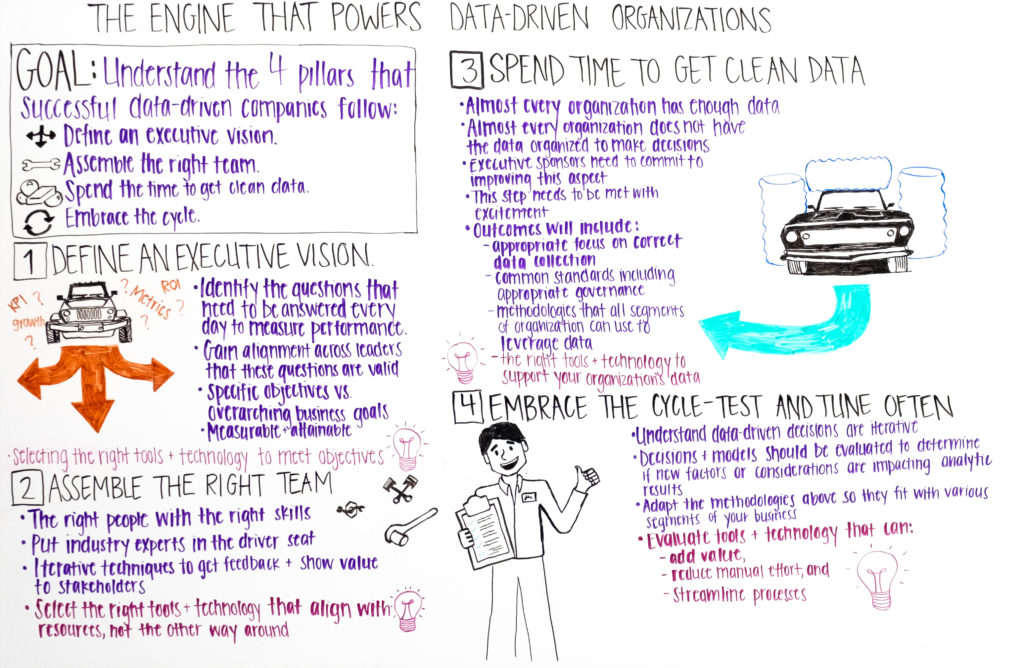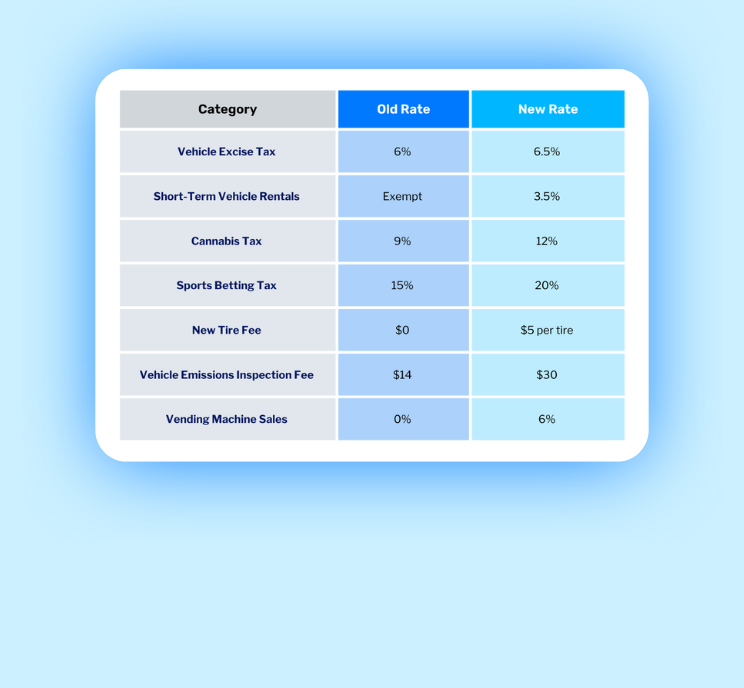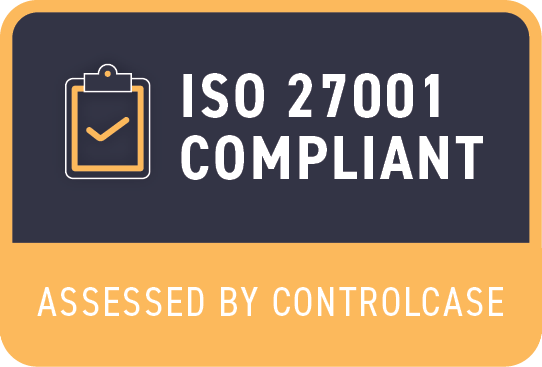Want to Speak Live with Nick?
- Phone: 410-988-1362
- Email: nscott@schgroup.com

Video Transcription
Hey everyone, my name is Nick Scott. I’m a leader at SC&H, in our BPM and Data Analytics practice. And today we’re going to be talking about the engine that powers data driven organizations. And I know that’s a hot topic right now. A lot of buzz words about it. If you’re a business owner I’m sure that you’ve talked about utilizing data to help your company make better decisions, drive more insights, increase profitability — could be a host of topics that you want to use data for. But today what we’re going to focus on versus being solution oriented is really talking about the four pillars or the different aspects that we see a successful company that really have embraced a data driven culture.
What they’re doing and maybe how you can adopt it into your business, or your strategy is to become a truly data driven organization. So, the first thing that we really want to hit on is a topic that is common amongst really any I.T. business transformation project and no dissimilarities here with what’s going on in the analytics world is defining an executive vision. So this is making sure that we have a top down mentality as to the outcomes that we want to achieve by utilizing data to make decisions and making sure we have buy in from the appropriate stakeholders so that way you know as you go on and you embrace these projects or these engagements that you’re going to have the I would say just the “oomph” to make sure you get things across the finish line. So not only is also the buy in, but one of the first things that we do when we come out we’re doing a data strategy project or basically figure out how to get started with one of these initiatives is just making sure we spend the appropriate amount of time conducting interviewing sessions with the executive team to make sure that we’re defining the right outcomes and really just speaking the same language as the business to make sure data is going to be supplementing the decisions that they’re making. I can’t tell you how many times that we get into a room and maybe it’s the CFO the CMO you know you’re talking about the business and you would think that they’re on the same page about the topics that you know they are very important to them what they look at day in and day out and it can vary.
So just making sure that you spend the proper amount of time documenting that coming up with an overarching vision is so important because anything you do after that fact can be measured against that and you basically have a blueprint for every decision that needs to be made going forward. So that’s number one making sure that we have that is that executive vision making sure that the car that we have here is going to pick the appropriate path to drive on and that we’re not going to get off that path as we’re moving forward. The second item that we really see being important is just assembling the right team.
This carries some of the same elements that we see with item number one but it is making sure that again we have the appropriate representation from the business driving these sorts of initiatives because they’re the people who are ultimately going to be using the end state solution or utilizing the data to make decisions. We want to make sure that we have functional experts leading teams or leading the initiatives so that way there always is that buy in throughout a project and that nothing is getting overly technical. You know there’s a lot of people who can bring extremely beneficial technical solutions to organization but without adopting it and understanding the true business requirements and how it’s going to impact the business or how a business user is going to actually use it and get their hands on it it’s very important.
It’s big for adoption and just making sure that something that can be used for many years going forward. So just assembling that right team putting industry experts in front of its people that understand the business problems that you’re trying to solve. There’s just immense benefit with putting those members on that team instead of just technical people who can execute the end game. The last approach with that too is this embracing a team that can work in an iterative fashion. So, a lot of these analytic solutions or data driven solutions they’re could not be right the first time.
You need to iterate. You need to get a first design in front of your business stakeholders and make sure that they like what they’re seeing and that they’re going to use it that way you can get their feedback if you need to adjust. You can do that, and you spend the appropriate amount of time just kind of having that cultural mindset that there’s going to be an iterative process to get to the result. And just having teams that embrace that and are okay with getting the critical feedback to make sure the solutions meet the business stakeholders’ objectives is very important.
So the next item which sometimes is the one that I would say is the most difficult is making sure organizations have clean data or that you spend the amount of time necessary to make sure that your data is clean and usable. This is one of the items that stops organizations from embracing some of these projects. They think that their data is siloed or they have data all over the place, it’s unusable, it’s going to cost way too much money for me to get this into a fashion that I can actually use it to make decisions. Having that mindset is going to derail any sort of data driven decisions that need to be made or just making sure these projects get to fruition where you can use analytics to help your business.
Just understanding that upfront and if you bring in the right people to basically comb through understand what is usable within your organization. Maybe we’re a little bit of time needs to be spent maybe it’s a little bit more data collection or there’s a better way to streamline data collection so that way it’s usable. Those sorts of things can get emphasis put on them and you’re not creating these uber long projects before anything tangible gets delivered. It’s just looking at things to take into bite sized chunks and make sure that the processes of collecting data can be easily digested and utilized throughout your business from business segment to business segment.
So again some of the main points most organizations have enough data you collecting it their systems all over the place just spend enough time organizing it collecting it and an understand that it’s going to be an ongoing process to make it usable to come up with data driven decisions.
And the last thing I want to highlight is just embracing the cycle. So, as I mentioned before iterative processes are something that are highly adoptive when it comes to analytical solutions or involving statistics data in your decision making is the first model might not always be perfect. The first iteration of what you put out might not always be perfect but if you embrace that mindset and know that you can iteratively add to it and deliver value as you go you’re going to come up with things in the long run that are really impactful.
A common theme that we see is starting off with financial data for example to put out a dashboard for an executive and in the very first pass of that we might only be getting information from a general ledger or one data source but it’s providing some incremental value. I can see the descriptive analytics that are happening in my business. Well maybe the next iteration we’re going through when we’re doing a little bit more predictive or we’re looking into the future. We can start to grab budget and forecast data, operational, results start to layer that into that dashboard and then you just start getting into trends over trends or year over year analysis things that are beneficial.
And as you develop and release that in increments and just embrace that cycle of always getting better you can really lead to better decision making and ultimately get the buy in that you wanted from the very first step from that executive vision. All right the last thing I want to touch on is just the text that I have up here in red that really is a common theme throughout these pillars is this selecting the right tools and technologies that are going to support your business and your organization. You want to make sure that you’re picking technological solutions that if your company has experience with that your personnel have experience with that is going to be there for the lifetime of your organization.
Too often we see companies focus on just buying a technology stack or very picking siloed type things that maybe have great reviews on Gartner and they pick it and they think it’s just going to impact their business. Well yes, they’re good products like Microsoft Power BI, Tableau. But if you have people in your organization that specify in one of them are good with one of them that might be better than just going with what Gartner says. That’s just one example. But too often we see organizations focused on the technology versus empowering the organization and the people around it to utilize technology to meet the business outcomes.
So hopefully that was helpful. If you have any questions, I think there’s going to be a link below that you can click on if you’ll contact us and get some more information.
Hope you enjoyed the whiteboard session. For now, thank you, and talk to you soon.





